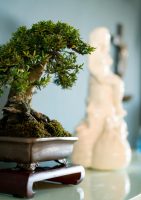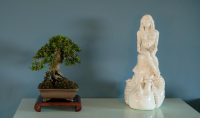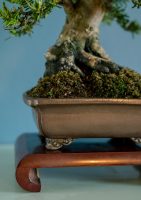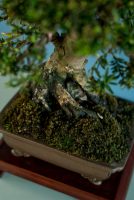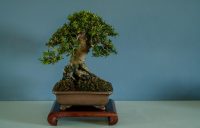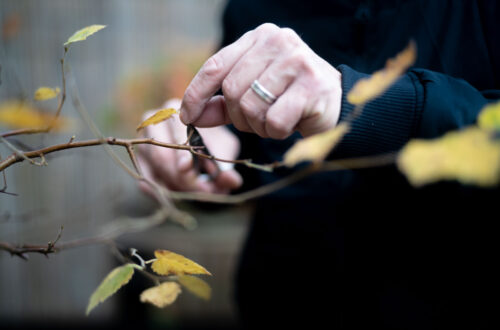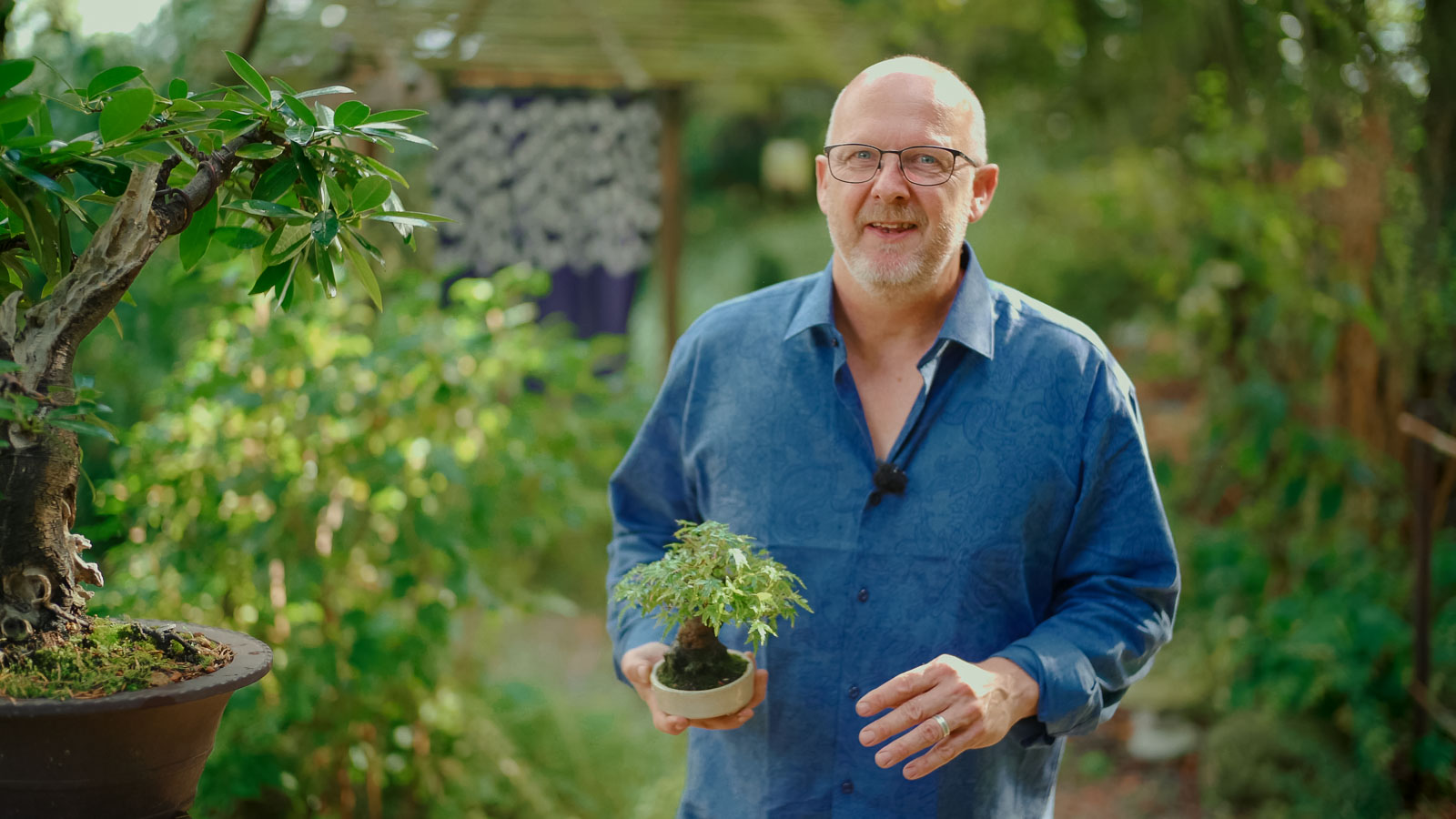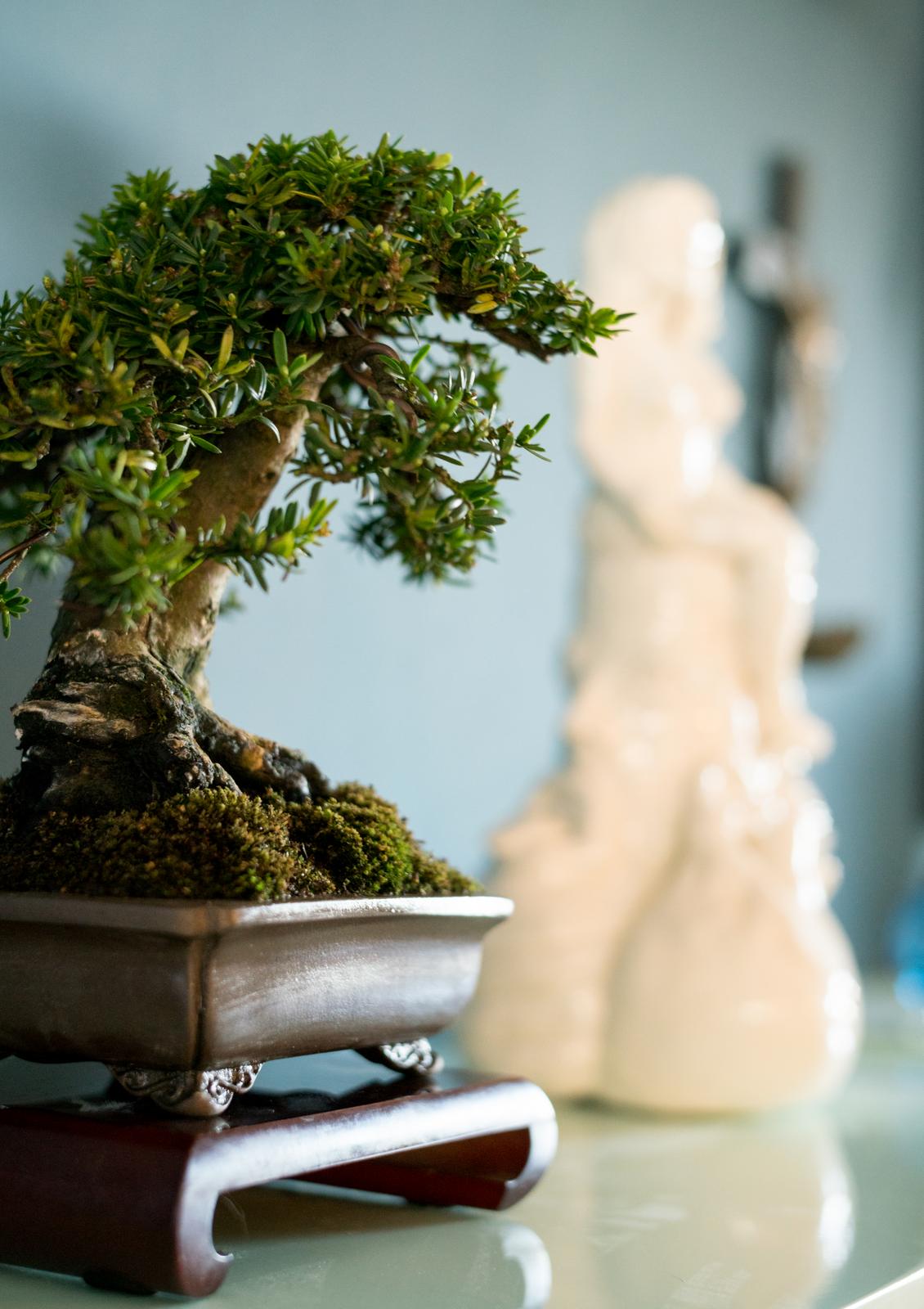
Art and bonsai relationships
Bonsai art and traditional art brought together. Bonsai art doesn’t have to stand alone as a separate art form. For years sculptures have been exhibited at galleries and art museums in connection with paintings. It is, for me, a natural thing blending art forms like bonsai and sculptures. Or bonsai with paintings for that matter. Scrolls have been a natural component at bonsai displays for years. Why not keeping evolving this.

There is much more that brings these art forms together than divides them.
The only thing that differs bonsai from many other art forms is that it is a living thing that doesn’t stay in its present form for long. It will always grow and continuously transform itself in a subtle or more dramatic form. But isn’t that true with other arts too? Bronze sculptures ages and change colour over time. Sculptures made from wood decays in nature. Art installations are deliberately set up to decay and change over a certain time period.
Bonsai related with clay sculptures is a natural connection, having the pot and sculpture coming from the same source. The clay. The tree grows from the soil and is surrounded by the clay that it is placed in as a bonsai.

Bringing bonsai and other art forms together should not be done without some thoughts about how and why we do it though. Here I have used a sculpture from our personal friend, the highly recognized and very talented Danish sculptor Lene Winther. Set up with a Shohin-bonsai European Yew, Taxus baccata, grown from raw material for more than 12 years. (Far more easy and playful than possible with a large bonsai I believe).But I will like to see it tested out there. The pot is Japanese and made by Ryuen – Kamiya Houkichi.
The strong-looking aged tree fits very well with the story told by the sculpture, also dealing with life, death and beauty. Bonsai and sculpture tell the same story.
Exactly like the bonsai the sculpture plays with the thoughts about our life and connections to something more than the everyday ordinary practicalities.

It is easy to set this up in the living room or where ever you want. At the same time adding more joy, more interest and more tension to the use of bonsai. In daily life – in this example – but also extended to bonsai exhibitions if done carefully and with some thoughts. Sometimes a little helpless setups have been tried out not being very tasteful or being very elegantly performed. I know art is much about taste, but the craft and understanding about how and why and when we do it, should at least have being asked before we carry it out in public.
We might not always agree on what is tried out. There is good taste and there is less good taste. But let’s keep evolving the art, and see it grow and evolve. Not just literally growing but also keeping the spirit moving. Keeping bonsai, art and humans alive.


